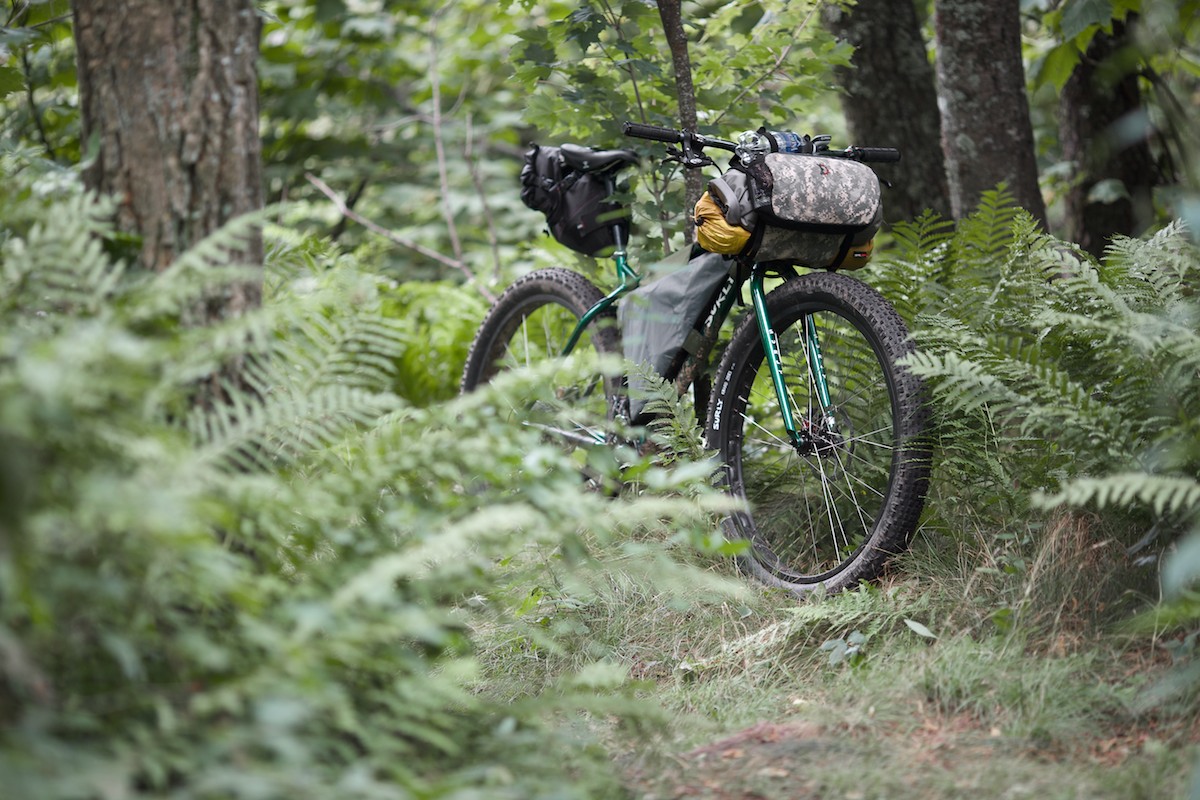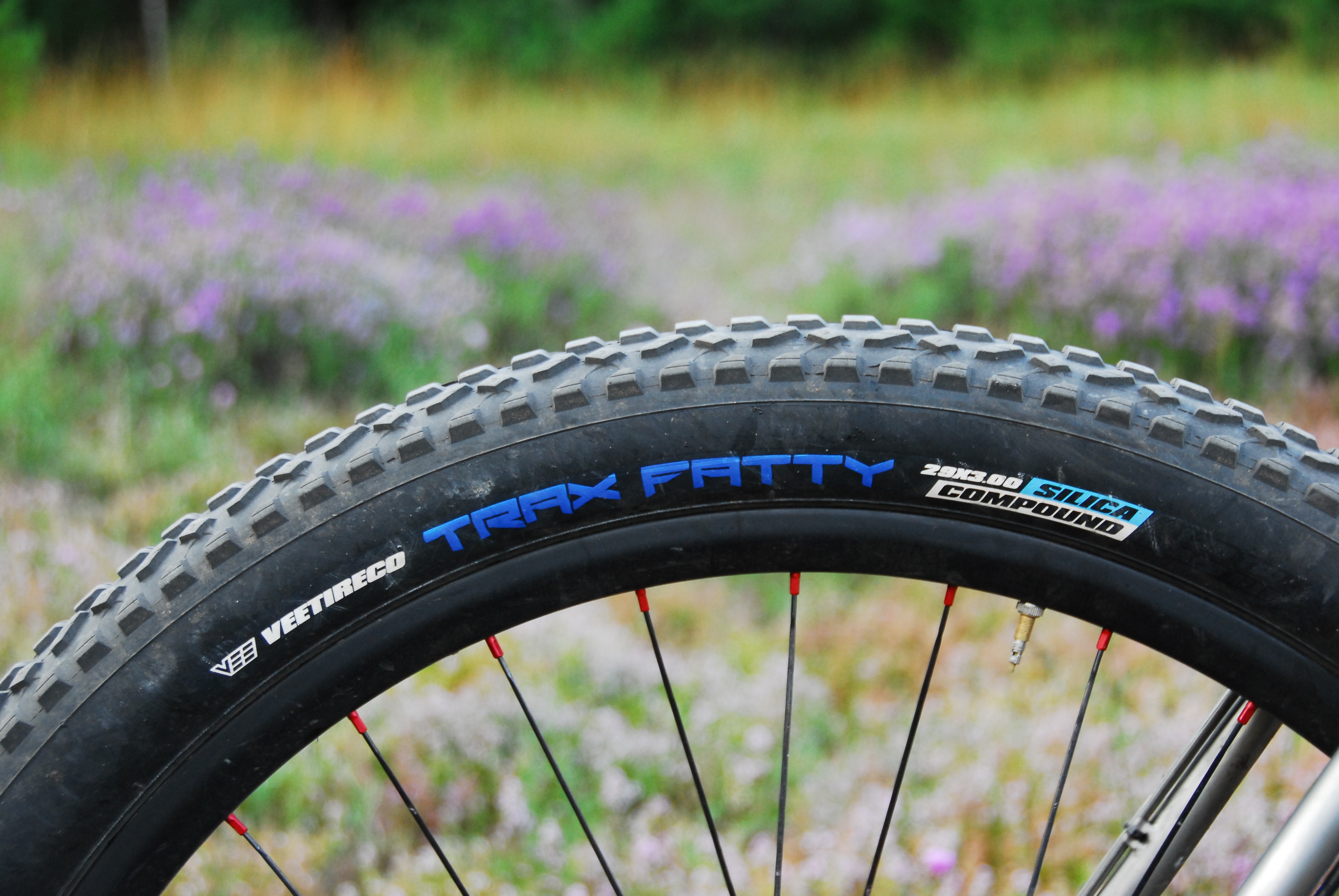Bikepacking or Dirt-road Touring (part 1 of 2) and The State of 29+
Part 1 of 2 of a ramble pondering nomenclature (dirt touring vs bikepacking), the state of the 29+ platform, and the Surly Krampus vs the ECR…
The backpack has long been the principle enabler of adventure travel. Everything needed to survive can be packed and ferried into the wilderness, or through faraway countries. Whether the expedition is hiking the length of some great trail or bouncing between budget accommodations in southeast Asia, the principles are the same… to explore the world on one’s own volition. At some point in time folks discovered that this can be accomplished by bicycle, and for as long as people have been touring on bicycles, people have been packing too much stuff. The typical touring setup involves 4 overloaded panniers and heaps of other peripherals strapped to a skinny tire bike. While the traditional ways of packing, and the traditional types of bikes, are well and good for a lot of people, for others who like find their way via dirt tracks and rocky roads, maybe not so much. Both the idea of bicycle touring and the idea of mountain biking have been upended in recent years with the advent of new types of gear, new types of bikes, and a new type of touring, i.e. bikepacking. Some people might credit the birth of bikepacking to the invention of the frame bag and handlebar roll in the mid-00s, specifically for the Great Divide Mountain Bike Race. Gear innovations enabled mountain bikers to pack light, remain nimble, and get deeper into wild places previously accessible to only boot-shod backpackers.

Over the last year, the term bikepacking has become quite the industry buzz word. It’s been attached to a wide range of bikes, and tossed about when describing everything from multi-day singletrack expeditions, to gravel road odysseys, to greenway explorations. The lines are blurring between bikepacking and bike touring. Last week while working on sorting functionality for routes, I spent some time thinking about these terms. The challenge of proper categorization is to maintain unique terms that don’t mix with other practices or systems… to maintain relevancy. The term bikepacking is nice because it is unique and fresh. However, when it comes to off-road multi-day bike travel, for the purpose of discussing bikes, gear, and routes, there are two breeds:
1. Bikepacking
Multi-day rides over terrain typically reserved for mountain bikes, a healthy ration of singletrack and dirt roads that makes an ultralight and rackless setup more relevant for technical surfaces and hike-a-bikes. Generally, the bikepacker travels light with minimal equipment for a 2-7 day trip using soft bags (a frame bag, seat pack, and handlebar roll). Emphasis is placed on riding; gear is sacrificed in order to maintain the feel of mountain biking.
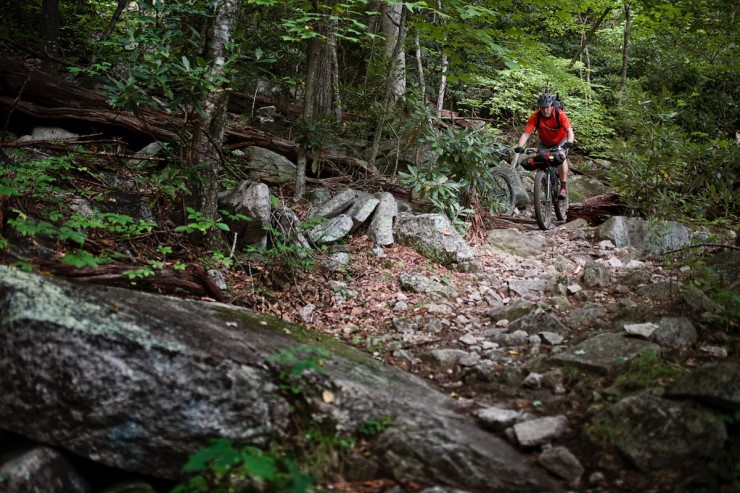
2. Dirt-road Touring
This involves longer trips for a couple weeks or a few months, maybe through foreign countries over mixed terrain including dirt, gravel, and pavement. More gear is needed for diverse situations and extended travel. Sometimes racks are employed to handle heavier loads, or extra H2O. The love of off-road riding is still a motivator, but the capacity for shredding lines suffers as the idea of long distance exploration takes the lead.

Although the two have many similarities, there are subtle differences which pose yet another conundrum. Which bike? There are a lot of factors that go into this decision. How long will the trip(s) be? Will you be traveling over rocky, technical bits? How about soft sand? How much water do you need? Is comfort more important than sprightliness? Will you be carrying a backpack? Will you need cold weather gear? With the amount of gear you plan on carrying, will you need racks or panniers? If you are traveling abroad, will the proper size tires be available, and does it matter?
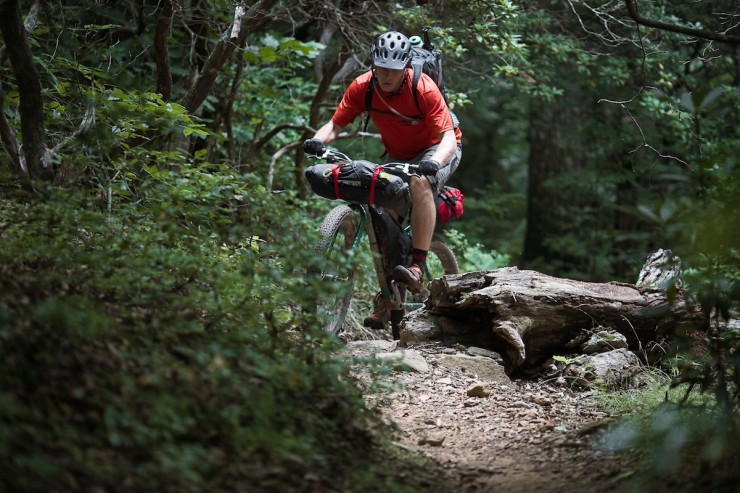
These are all legitimate questions in the decision making process, although that last one is getting ever-increasingly ignored by intrepid dirt-tourers. Folks are using fat bikes, 29ers, and even the newest bastard tire-size, the 650b, to reach far corners of the globe. My original touring bike choice was a safe one, a 26″ Surly Troll. The Troll is still a fantastic bike with all of the touring trimmings and cross country geometry, but shortly thereafter I saw the benefits that 29ers and fat bikes have to offer. Then along came 29+, AKA ‘mid-fat’.
The state of 29+
When Surly released the Krampus in 2012, it seemed as if a lot of people simultaneously had the same thought: this thing will be perfect for bikepacking. It has a solid trail geometry, enough squish to tame rough tracks, a nice triangle for a frame bag, and mid-fat tires allow for riding over varied surfaces. Surly has long held a flush hand in the bike touring segment, and has even reinvented it several times over. Their Long-haul Trucker has been the go-to touring bike for over a decade now, and with the Pugsley release in 2005 came new territory to explore. Then the Krampus created yet another game.
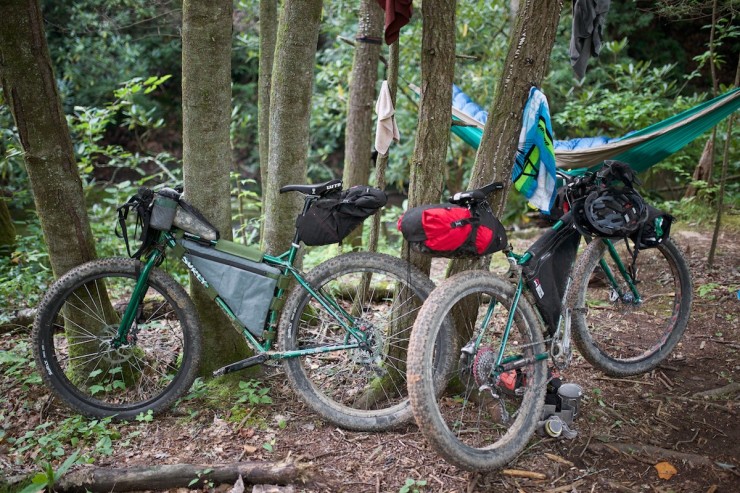
Just to organize thoughts which have been scattered across many posts here, there are three reasons why the 29+ platform works extremely well for both off-road touring and bikepacking: (1) beefier tires allow for the exploration of a variety of terrain such as rocky roads, sandy areas, and even slightly snowy conditions; (2) the bump squelching 3″ tires offer suspension characteristics which ease the jarring effects of dirt tracks and allow for longer days in the saddle; (3) the pedaling efficiency of a rigid frame is maintained through lack of suspension. There are also several other factors, such as the Knard 27tpi, which I found to be a tough, long-lasting tire that works well both on road and off. And as of the last couple of months, and Interbike last week, there is evidence that the industry is starting to embrace it.
At least 5 new 29+ bikes were released at Interbike including Niner’s ROS9+, the Jones Plus, and the Chumba Ursa Backcountry 29+. In the past few months several tire and wheel manufacturers decided to jump in: Maxxis with their Chronicle, the Vee Trax Fatty, the Bontranger Chupacabra, and Stan’s Hugo 52.
With or without these new products, I’d still be trudging full steam with 29+. The ECR carried me comfortably through Africa for six months, the 27 tpi Knards proved to be a worthy touring tire, and over the last month I have been completely smitten by the Krampus. But it’s good to see others are getting it; without imitation there would be no innovation; without bike touring, there may not be bikepacking.
Check out part 2: The Krampus vs The ECR.
FILED IN (CATEGORIES & TAGS)
Bikepacking Gear
Components
29-plus surly-bikes surly-ecr surly-krampusPlease keep the conversation civil, constructive, and inclusive, or your comment will be removed.






